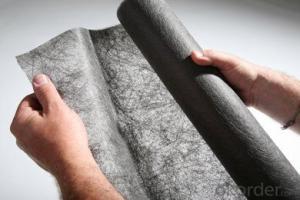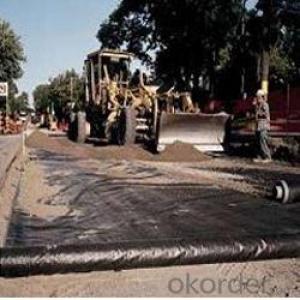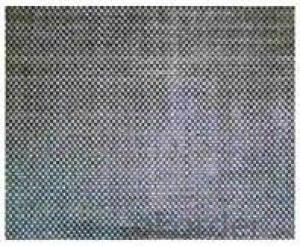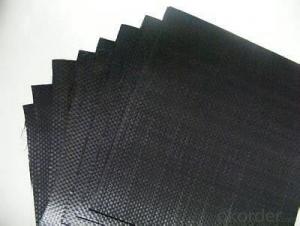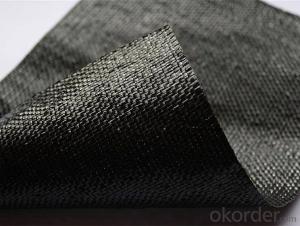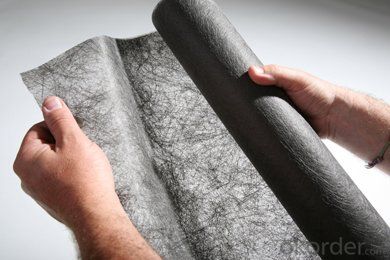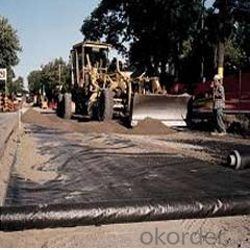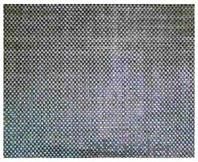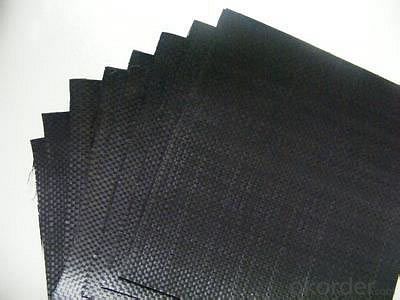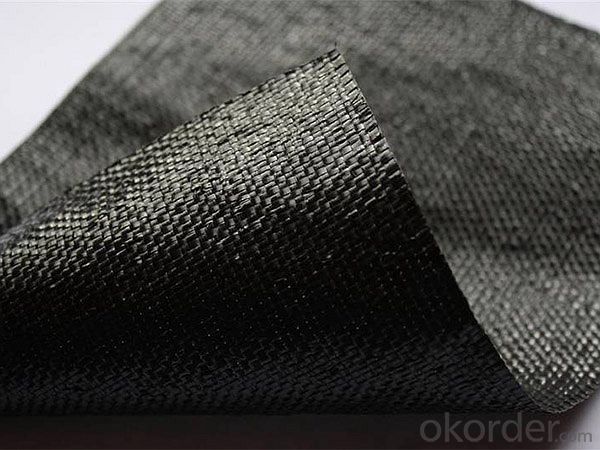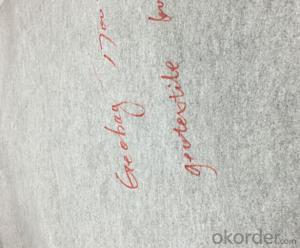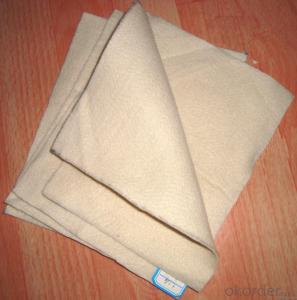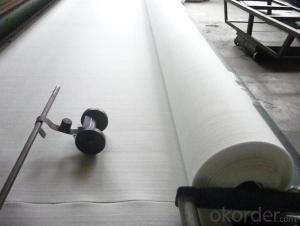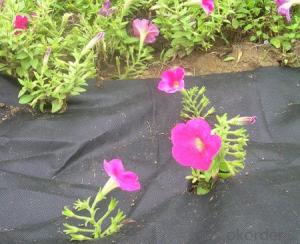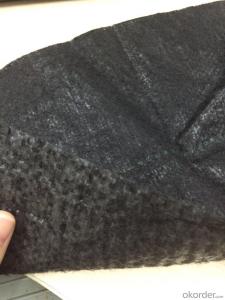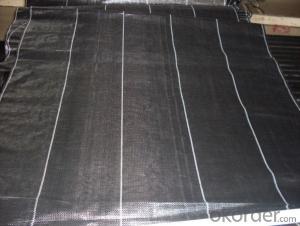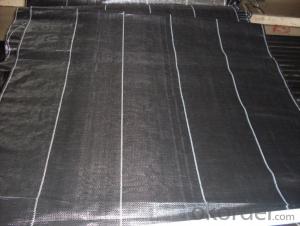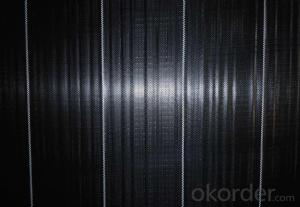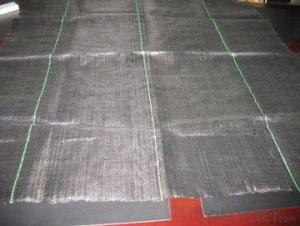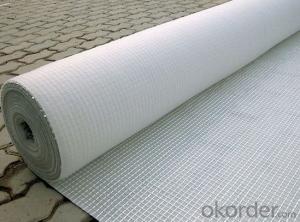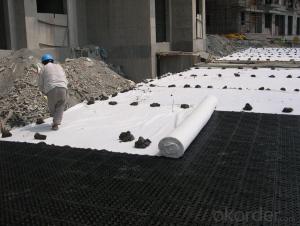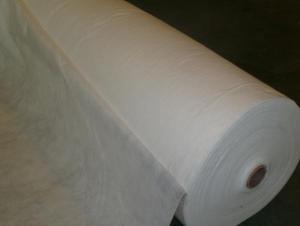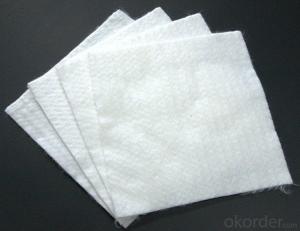Non-Woven Geotextile Membrane Woven Weed Control Weed Guard
- Loading Port:
- China main port
- Payment Terms:
- TT OR LC
- Min Order Qty:
- 1000 g/m²
- Supply Capability:
- 100000 g/m²/month
OKorder Service Pledge
OKorder Financial Service
You Might Also Like
Specification
Geotextiles are made from either polypropylene or polyester and geotextile fabrics come in three basic forms: woven, needle punched (resembling felt), or heat bonded (resembling ironed felt). In Australia the most popular geotextile used is the polyester needle punched fabric, as the polyester is more UV stable than the polypropylene material.
Applications-Geotextile
The Geotextiles are widely used in many civil engineering and industrial applications. Some of Our products are used in various applications:
Geotextile for Landfill
Some of the Geotextile Fabrics we carry are:
Pond Liners
Landfill Liners
Needle punched Non-wovens
Woven Monofilament Fabrics
Soil Stabilization, Reinforcement and Separation products
Non-woven Spun-bonded Landscape Fabrics
Ground Cover Fabric
Inlet Protection Fabric (DOT Spec)
Fuzz-back Fabric
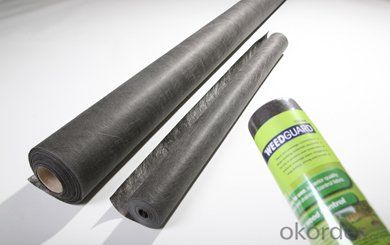
FAQ:
Q: What kind of payments does jenor support?
A: T/T, L/C, Cash are accepted.
Q: Do you charge for the samples?
A: Accordeing to our company policy, the samples are free, we only charge the freight fee. And we will return the freight fee during the next order.
Q: Can you produce according to customers' design?
A: Sure, we are professional manufacturer, OEM and ODM are both welcome.
Q: Do you have other products?
A: Yes, please check the pictures:
- Q: What are the key considerations for geotextile installation in high temperature environments?
- The key considerations for geotextile installation in high temperature environments include selecting geotextiles that are resistant to thermal degradation, ensuring proper anchoring and securing of the geotextiles to prevent movement or displacement, and considering potential expansion and contraction of the geotextiles due to temperature fluctuations. Additionally, it is important to assess the long-term performance and durability of the geotextiles under high temperature conditions and to monitor their performance regularly to detect any signs of degradation or failure.
- Q: Geosynthetics direct shear instrument reference standards which
- Geosynthetics Direct shear test The abrasive characteristics of the sand / geotextile interface were measured by direct shear test of the standard sand / geotextile contact surface. Test Specimens: 1. Tile the specimen on a rigid horizontal base located in the lower part of the shear box, with the front end of the specimen, and the test leads: ISO.1, GB / T.1, ASTM / D5321, JTGE50T1129, SL / T235-1999. Clamped in front of the shear zone, the sample and the base between the adhesive with adhesive, after bonding the sample should be flat, without folding and folding, the test sample and the base is not allowed between the relative slip; 2. Install the upper shear box: with the pre-quasi-quality standard sand filled with the upper shear box, the thickness of 50mm, sand thickness should be uniform, after the density of the density of 1750kg / m3; 3. Install the horizontal loader , And apply 50KPa to the sample with a reference weight of 50KPa normal pressure.
- Q: Can geotextiles be used in the construction of golf course bunkers?
- Yes, geotextiles can be used in the construction of golf course bunkers. Geotextiles are commonly used in construction projects to stabilize and reinforce soil. In the case of golf course bunkers, geotextiles can be used to prevent erosion, improve drainage, and provide a stable base for the sand.
- Q: What are the cost implications of using geotextiles?
- The cost implications of using geotextiles can vary depending on factors such as the type and quality of the geotextile, the size of the project, and the specific application. In general, geotextiles can add an additional cost to a project, as they need to be purchased and installed. However, they can also provide cost savings in the long run by reducing the need for expensive soil stabilization measures, increasing the lifespan of structures, and minimizing maintenance and repair costs. Additionally, geotextiles can provide cost-effective solutions for erosion control, slope stabilization, and drainage, which can help prevent costly damages and disruptions.
- Q: What are the advantages of using geotextiles in landfill lining systems?
- There are several advantages of using geotextiles in landfill lining systems. Firstly, geotextiles act as a barrier that prevents the migration of contaminants from the landfill into the surrounding environment. This helps to protect groundwater and nearby ecosystems from contamination. Secondly, geotextiles enhance the stability and integrity of the landfill lining system. They provide reinforcement and help to distribute the load evenly, which reduces the risk of structural failure. Additionally, geotextiles have excellent filtration properties. They allow for the efficient drainage of leachate, which is the liquid that is generated as waste decomposes. This helps to prevent the buildup of pressure within the landfill and reduces the risk of leachate seeping into surrounding areas. Furthermore, geotextiles are durable and resistant to degradation, ensuring the longevity of the landfill lining system. They are also lightweight and easy to install, which can save time and costs during construction. Overall, the use of geotextiles in landfill lining systems provides numerous benefits in terms of environmental protection, structural integrity, drainage efficiency, and cost-effectiveness.
- Q: How do geotextiles help in preventing clogging of drainage systems?
- Geotextiles help prevent clogging of drainage systems by acting as a filter, allowing water to pass through while preventing the entry of fine particles and debris that could potentially clog the system.
- Q: What is the standard width of geotextile?
- Our company's production is normal 4/6 two specifications.
- Q: Are geotextiles effective in preventing weed growth?
- Yes, geotextiles are effective in preventing weed growth. Geotextiles act as a barrier, blocking weed seeds from reaching the soil and germinating. They also prevent sunlight from reaching the weeds, further inhibiting their growth. Additionally, geotextiles allow for proper water drainage and soil aeration, improving overall plant health.
- Q: Geotextile (250g / square meter) offer
- 250 grams of short fiber geotextile Price: 2.30 yuan / square meter 250 grams of filament geotextile Price: 3.70 yuan / square meter 250 grams of impervious geotextile Price: 2.80 yuan / square meter.
- Q: How about the geotextile pond
- You said to cover the fish pond, I understand is to build the bottom of the fish pond, but the use is not geotextile, but the composite geomembrane, the film is generally two layers of geotextile in the middle of a layer of geomembrane, , And geomembrane on both sides of the geotextile can prevent the bottom of the sharp objects pierced the geomembrane.
Send your message to us
Non-Woven Geotextile Membrane Woven Weed Control Weed Guard
- Loading Port:
- China main port
- Payment Terms:
- TT OR LC
- Min Order Qty:
- 1000 g/m²
- Supply Capability:
- 100000 g/m²/month
OKorder Service Pledge
OKorder Financial Service
Similar products
Hot products
Hot Searches
Related keywords
